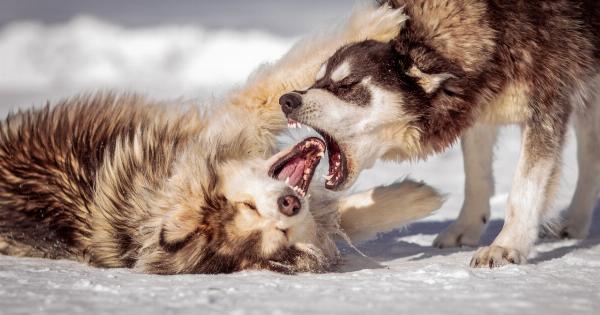Dogs are known for their loyalty and playful personalities. However, there are instances when dogs bite which can result in severe injuries.
According to the Centers for Disease Control and Prevention (CDC), about 4.5 million people are bitten by dogs every year in the United States alone, with children being the most common victims. Understanding why dogs bite is crucial for dog owners and people who spend time around dogs.
1. Fear
Fear is one of the most common reasons why dogs bite. A dog may feel threatened by a person, another dog, or even an object. If they are unable to retreat, they may resort to biting to protect themselves or their territory.
This is particularly evident in dogs that have not been socialized properly or have had traumatic experiences in the past.
2. Protection
Dogs are naturally protective of their owners, their puppies, and their home, and they may show aggression towards anyone they perceive as a threat. By biting, they are trying to defend their loved ones and may feel justified in their actions.
This is why it is crucial to train dogs socialization skills so that they can interact with other dogs and people without feeling threatened.
3. Aggression
Some breeds, such as Pit Bulls, are associated with aggressive behavior. However, this is a myth, as any breed of dog can show signs of aggression. An aggressive dog may show warning signs such as growling and baring their teeth before biting.
This behavior may arise due to internal stress or factors like physical pain, lack of socialization, or a traumatic experience.
4. Resource guarding
Dogs may bite if they feel like someone is trying to take away something important to them, like food, toys, or their bed.
Dogs are territorial and possessive of their belongings, and they may become aggressive if they feel like their possessions are being threatened.
5. Redirected aggression
Dogs may show redirected aggression if they are already agitated or stimulated by a particular situation, and a new stimulus comes up, like a person or a pet.
For instance, a dog that is barking at a passerby through a window may suddenly bite their owner when the owner tries to intervene, as the dog is already stimulated and agitated.
6. Predatory drive
Some dogs have a high prey drive, and they may bite if they perceive a cat, squirrel, or other small animal as prey. This is most often seen in breeds like terriers and hounds, where chasing and capturing small animals was their original purpose.
7. Medical problems
Dogs may show signs of aggression if they are in pain or suffering from an underlying health condition. For instance, a dog with a toothache may bite if their mouth is touched, and a dog with an ear infection may snap if their ear is touched.
8. Play
Most dogs love to play, and they may resort to nipping or biting during playtime. Play biting is most common during puppyhood, and most dogs grow out of this behavior as they get older.
However, it’s important to redirect their attention to toys and discourage any aggressive behavior during playtime.
9. Lack of Training
Proper dog training is critical in curbing problematic behaviors in dogs. If a dog has not been trained to obey commands or socialized properly, they may get anxious, frustrated, and aggressive.
Basic training helps dogs learn boundaries, build confidence, and interact appropriately with other people and pets.
10. Improper handling
Dogs may become aggressive if they are mishandled, such as being hit, kicked, or pinned down. Some dogs may bite if they are restrained forcefully, making them feel scared or threatened.





























